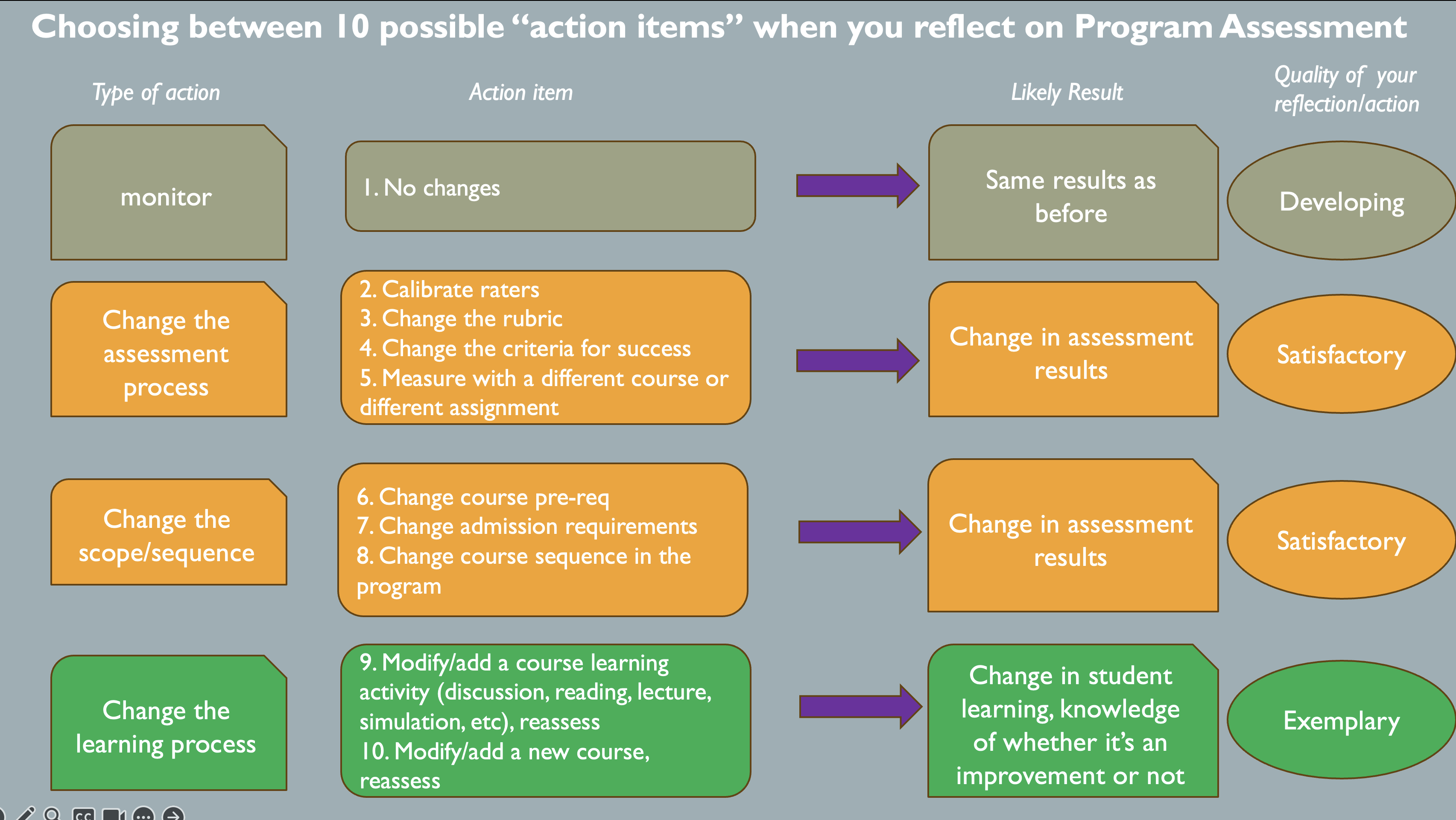by Ken Nehrbass
Assessment is meant to accomplish more than “accountability.” It should result in continual improvement of the degree programs. Occasionally, the data from student work makes it pretty clear that something needs to be changed in the program (if 30% of your students are passing your exam, additional learning activities are likely necessary). But more often, faculty have a hard time discerning what action step to take, once they have data from a Student Learning Objective (SLO). But…
What action is necessary (if any) when you meet or exceed the criteria for success for an SLO?
If you are wondering what action steps to implement, I have ten options below for you to choose from (NOTE: some options are better than others).
The ten options fall into four main categories:
- Monitor (no changes)
- Change the assessment process (you don’t actually change the learning activities, you just adjust the methodology for assessment)
- Change the scope and sequence (you don’t actually change the learning activities, you just change admission requirements or the order of the courses in the program)
- Actually improve the learning activities.
Monitor
Often, if the SLO criteria is met or exceeded, professors reckon they will “monitor” rather than improve the course. There is nothing wrong with monitoring, but if you don’t deliberately improve the learning process, how likely is it that students will perform better in your program next year compared to last year? Maybe you already hit the ball out of the ballpark, but why not aim higher and further? Make your great program even greater!
Change the assessment process
For some reason, professors often prefer to change the assessment process, rather than change the actual learning activities in a course. This may include calibrating professors on the use of a rubric, or developing or changing a rubric. Or, if you met or exceeded your benchmark, you may choose to increase the threshold for the benchmark (e.g., move from “80% of students will receive a level 4” to “90% of students will receive a level 4”). Alternately, professors may wish to triangulate their assessment data next time, with assignments from a different course that teaches the same SLO.
These “tweaks” to the methodology are fine, but note that they still don’t actually change the learning process. Any marked improvement in the assessment scores are only due to how you measure, not due to your improvements of course design and delivery.
Change the scope and sequence
This option is more drastic, and is done less frequently. But if students are not meeting the criteria for success in a certain SLO, you may make your admission requirements more rigorous, or you may adjust the scope and sequence so students are more prepared for your course. These changes may be important, and may result in higher assessment scores, but the improvement will not be due to changes in what actually happens in the classroom.
Change the learning process
Finally, (and even if you are exceeding your criteria for success), you may choose to change a learning activity, and measure whether it increases scores of student work on the critical assignment. Such improvements may be:
- change a required reading
- add/modify a discussion time on a topic
- require a field component or a lab activity
- add/modify a reflection on a video
- add/modify a High Impact Practice like service learning, collaborative assignment, a research project with the professor’s guidance, or a capstone project
Remember, you don’t know if you have improved student learning unless you apply the same rubric that you used the last time.
This year, aim high! How can you improve the learning process in your course?
